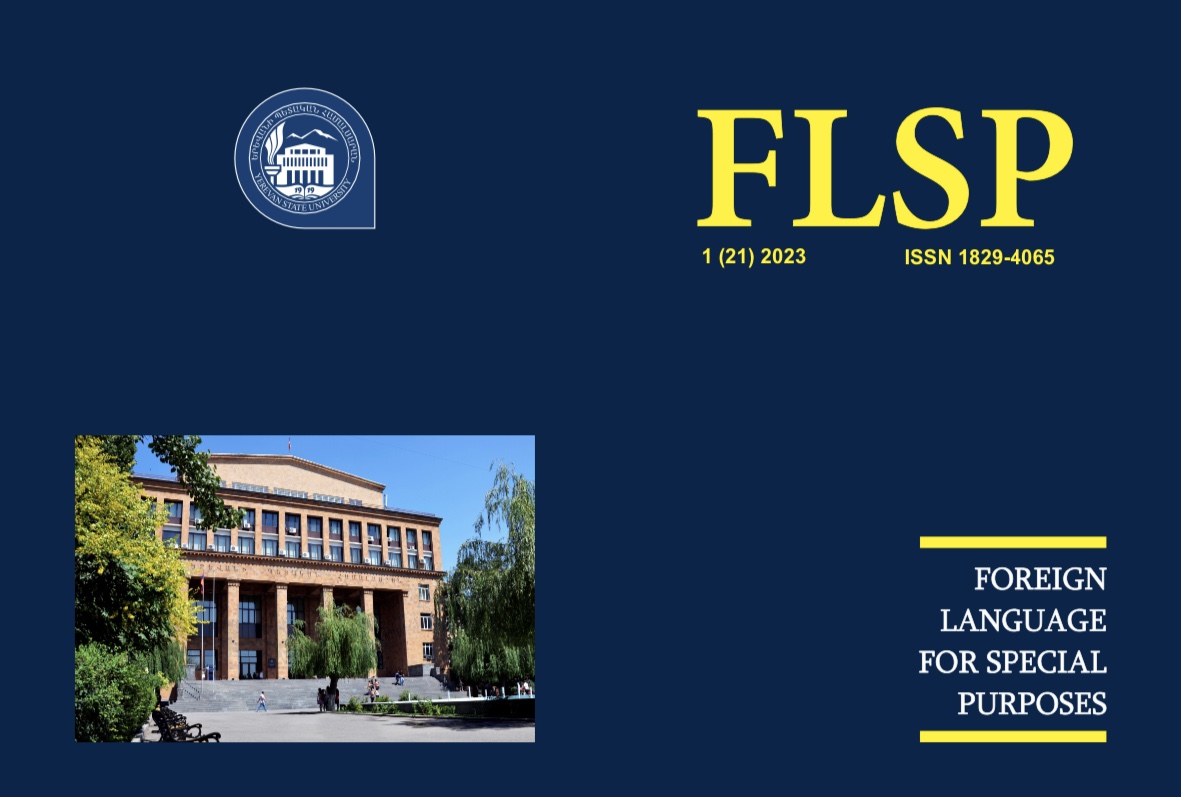SOME LINGUOSTYLISTIC PROPERTIES OF COUNCIL OF EUROPE CONVENTION ON ACCESS TO OFFICIAL DOCUMENTS AND ITS ARMENIAN TRANSLATION
DOI:
https://doi.org/10.46991/flsp.v2i22.11551Keywords:
Legal English, graphology, lexis, morphological features, syntactical characteristicsAbstract
The present article is devoted to the study of some linguostylistic features of Legal English in general and to the properties typical of the Council of Europe Convention on Access to Official Documents and its respective Armenian translation in particular. The purpose of the study is to analyze pieces of legal discourse, identifying its main features, especially those related to graphology, lexis, morphology and syntax. In particular, within the framework of this article an attempt has been made to present some linguostylistic peculiarities of Legal English (written) based on the study of a definite legal document. Parallels are drawn between the original text and its Armenian translation. The investigation has disclosed not only the degree of complexity of Legal English in both documents, but also emphasized the fact that the Convention has its own stereotyped format and structure, its typical choice of words and parts of speech, sentence length and construction. The Armenian translation of the original document is well done, suggesting that the translator has had specialized knowledge relevant to the given field which has resulted in a competent and correct translation.
References
Act. (n/d). Legal Information Institute. URL: https://www.law.cornell.edu/wex/act
Bhatia, V. K. (1993). Analyzing genre: Language in professional settings. London: Longman.
Bhatia, V. K. (2010). Textbook on Legal Language and Legal Writing. New Delhi: Universal Law Publishing.
Goddard, C. (2010). Didactic aspects of legal English: Dynamics of course preparation. Special Issue of ESP across cultures: Legal English across cultures, 7, 45-62.
Kurzon, D. (1989). Language of the Law and Legal Language. Special Language: from Humans Thinking Machines, 283-290. Clevedon, Philadelphia: Multling Matters.
Kouyoumdjian, M. (1981) A Comperhensive Dictionary: English – Armenian. Beirut, Lebanon: D. Donguian & Files․
Legislation. (n/d). Faculty of Law. University of Oxford. URL: https://www.law.ox.ac.uk/legal-research-and-mooting-skills-programme/legislation
OALD (Oxford Advanced Learner’s Dictionary of Current English). 2005. Oxford: OUP.
Oates, A. and Enquest, L. (2009). Grammar, Punctuation, and Style for the Legal Writer. US: Aspen Publishers.
Rylance, P. (1994). Legal Practice Handbook: Legal Writing & Drafting. Lincoln: Blackstone Press.
Tiersma, P. M. (1999). Legal Language. Chicago: University of Chicago Press.
Tromsø/Council of Europe Convention on Access to Official Documents. (2009). URL: https://www.access-info.org/wp-content/uploads/Council_of_Europe_Convention_on_Access_to_Official_Documents.pdf
Trosborg, A. (1995). Statues and contracts: An analysis of legal speech acts in the English language of the law. Journal of Pragmatics, 23/1, 31 - 53.
Wydick, R. C. (2005) Plain English for Lawyers. US: Carolina Academic Press.
Պաշտոնական փաստաթերին հսանելիության մասին Եվրոպայի Խորհրդի կոնվենցիա։ URL: http://www.parliament.am/law_docs_8/280322HO68_konventcia.pdf
Downloads
Published
Issue
Section
License
Copyright (c) 2023 Varduhi Mirijanyan

This work is licensed under a Creative Commons Attribution-NonCommercial 4.0 International License.
Creative Commons Attribution-Non-Commercial (CC BY-NC). CC BY-NC allows users to copy and distribute the article, provided this is not done for commercial purposes. The users may adapt – remix, transform, and build upon the material giving appropriate credit, providing a link to the license. The full details of the license are available at https://creativecommons.org/licenses/by-nc/4.0/

